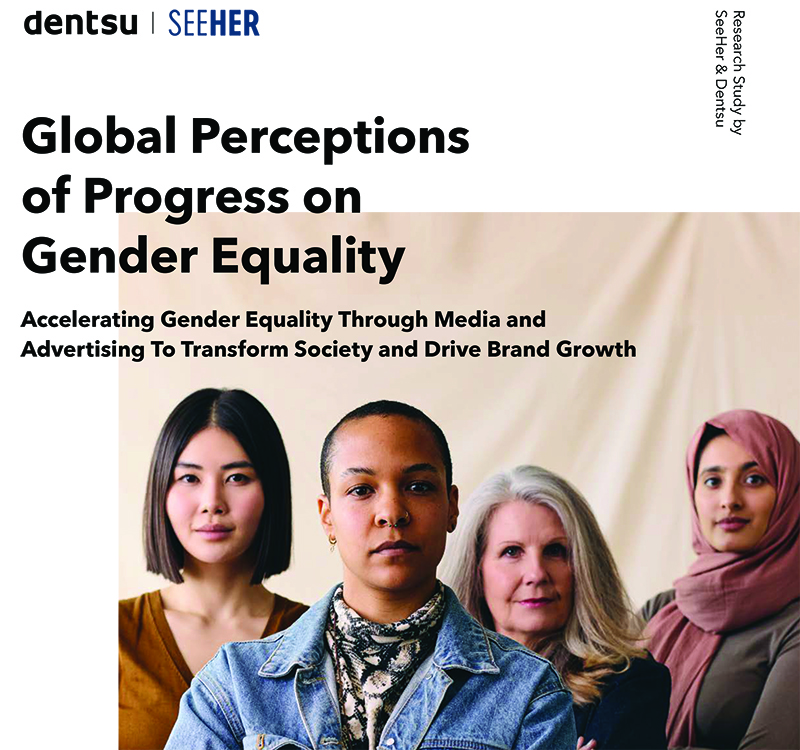Trends
81% of Gen Zers Say Multicultural/Diverse Communities Greatly Shape Brand Preferences [REPORT]

Direct Digital Holdings released a new whitepaper, Cracking the Code: How Multicultural & Gen Z Reshape Mainstream Marketing. The paper features exclusive research along with insights from industry leaders and academics.
Marketing procurement seeks better, smarter metrics in 2024 [REPORT]

WFA research shows that teams are looking at creative and production as well as media in their bid to identify savings for 2024. Many company target setters fail to understand marketing, increasing barriers between procurement, marketing and the rest of the organization.
The Impact of CORRIDOS on Culture [REPORT]

With instruments and lyrics inspired by Mexican culture, Mexican Corridos are a beloved musical format attracting enthusiasts and newcomers to today's genre-blending collaborations. To better understand the impact of Corridos on culture, we partnered with Orci Advertising for an in-depth study examining what's driving the evolution of this revolutionary genre. Learn more about this dominant force in music and pop culture
Digital Momentum leads MAGNA to Raise 2024 Advertising Market Forecast to +9%

Vincent Létang, EVP Global Market Intelligence and author of the report, said: “Several factors led MAGNA to increase its US ad market growth forecast. That includes an improved macro-economic outlook with GDP growth raised from 1.7% to 2.4% in the last few months, the momentum of digital media formats: social media, retail media, and streaming. The latter is driven by a strong expansion in the reach and marketing opportunities offered by ad-supported streaming. That leads MAGNA to raise the non-cyclical growth forecast to +6.7%. We are slightly reducing the forecast for cyclical spending (due to a slowdown in political fund-raising) but, overall, we now expect total media owner ad sales to grow by +9.2% this year (compared to +8.4% in our previous update) to reach $369 billion.”
2024 ANA LGBTQ+ Marketing Inclusion Survey Unveils Transformative Insights

The 2024 ANA LGBTQ+ Marketing Inclusion Survey offers a comprehensive view into the state of LGBTQ+ inclusion in advertising. With 55 percent of advertisers engaging in LGBTQ+-inclusive marketing, the survey and report highlight a significant shift towards inclusivity. This approach has led to a 97 percent acknowledgment among advertisers of the positive impact inclusivity has on brand perception. However, the journey to fully inclusive advertising faces challenges. Navigating brand-safe environments and addressing consumer resistance are notable concerns.
Women’s History Month: March 2024

National Women’s History Month honors the successes and sacrifices of U.S. women. It dates to March 8, 1857, when hundreds of women from New York City garment and textile factories rallied to protest harsh working conditions. In 1909, New York City became the site of the nation’s first Women’s Day celebration, a year after 15,000 women there marched to demand shorter working hours, better pay, an end to child labor and the right to vote. More than seven decades later in 1981, Congress set aside the second week of March as National Women’s History Week. Six years later, Congress expanded the week to a month. As we celebrate Women’s History Month, we reflect upon the advances women have made, including increased earnings, educational attainment and job opportunities.
Married Couple Households Still the Majority but Share Varied by Geography in 2021

Despite a decades-long decline, coupled households remained the most common type of U.S. living arrangement in 2020 though shares varied across states and counties.
How marketers can advance personalized marketing across the digital advertising ecosystem

In modern media, personalization will become increasingly critical in connecting audiences with content and advertising that best align with their interests and preferences. For brands seeking 1:1 relationships with new consumers, quality audience data has become critical as the digital landscape expands and channel engagement fragments. This is particularly relevant across two fronts: traditional digital media across computer and mobile and connected TV.
Five Unstoppable Trends That Will Transform TV Advertising by 2030

When 2024 began, predictions for the trends that would define the year appeared throughout the advertising world. Such lists are valuable. They can help a business chart a prosperous course over the next 12 months.
Programmatic Transparency: The $22 Billion Opportunity

By now, you are undoubtedly familiar with at least the key recommendations from the ANA's ongoing Programmatic Media Supply Chain Transparency Study. If not, fear not, for over the next few weeks, I'll be laying them out in plain terms — and, trust me, it uncovered some seriously eye-opening insights that are important to your business!
Why Businesses Should Be Thinking About Measurement First

Effective digital advertising is critical for businesses, no matter their size. For smaller businesses it can be essential for sustainable growth. Increasingly though, effective digital advertising hinges on having high quality measurement signals to take full advantage of AI and understand the impact of each dollar spent on marketing efforts. Hence the marketing maxim, "You can't manage what you can't measure."
How Hispanic Americans Get Their News [REPORT]

Just over half of U.S. Hispanic adults (54%) get their news mostly in English – far higher than the share who get their news mostly in Spanish (21%). About a quarter of Hispanic Americans (23%) say they consume news in both languages about equally.
Lights, Camera, Action! [REPORT]

Dive into the dynamic world of US Hispanic TV/Movie viewing habits. In this exclusive slideshow article by Amrak Solutions, we delve into the intricacies of what drives Hispanic audiences in their entertainment choices. From the top movie and television genres preferred by Hispanics to the invaluable insights gleaned from the American Time Use Survey regarding their cinema habits. Join us as we unravel the data, uncover the trends, and explore the preferences shaping the media landscape for this growing demographic.
2023 State of Hispanic Homeownership [REPORT]

In 2023, the Hispanic homeownership rate reached 49.5 percent, a key milestone. Despite facing what has been reported as the least affordable housing market on record, Latinos added a net gain of 377,000 owner-households, the largest single-year gain since 2005, almost 20 years. While rapidly rising interest rates and low housing inventory were the biggest barriers to homeownership growth last year, resiliency remained. Hispanic homebuyers were willing to relocate to more affordable areas, utilized co-borrowers in their financing, and took advantage of local and specialized programs to make homeownership possible.
The U.S. Evolution of Soccer into Fútbol [REPORT]

Each day brings us closer to the highly anticipated summer of 2026, when the United States, Canada and Mexico will make history by jointly hosting the largest FIFA World Cup yet, featuring 48 teams and spanning 104 matches. As the host city for the 2026 World Cup final, New Jersey’s Metlife Stadium will shine on the global stage, drawing billions of viewers worldwide. During the Qatar 2022 World Cup, an estimated 9 million viewers tuned in to the Spanish-language broadcasts on Telemundo, Peacock and its streaming services to witness the nail-biting final between Argentina and France.
More Counties Saw Population Gains in 2023

U.S. counties experienced population gains than losses in 2023, as counties in the South saw faster growth and more Northeast and Midwest counties had population losses turn to gains, according to the U.S. Census Bureau’s Vintage 2023 estimates of population and components of change.
How Teens and Parents Approach Screen Time [REPORT]

Most teens at least sometimes feel happy and peaceful when they don’t have their phone, but 44% say this makes them anxious. Half of parents say they have looked through their teen’s phone
Global Perceptions of Progress on Gender Equality [REPORT]

Gender inequality is truly global in scope and limits opportunities for nearly four billion women around the world. The World Economic Forum’s 2023 Global Gender Gap Report revealed that the global gender parity gap has reached a closure of only 68%. The 2023 Global Perceptions of Progress of Gender Equality, an ongoing thought leadership initiative between SeeHer and dentsu, found much the same results. Across the five countries we surveyed, women are perceived as 70% equal to men across various dimensions, encompassing equal rights, political empowerment, workforce/economic participation, educational attainment, health, and societal perceptions.
Attention beyond views for creative effectiveness

The marketing industry is almost unanimous in their belief that attention plays an important role in advertising success, and the vast majority believe that attention has an important influence on creative effectiveness. However, despite the strong belief that attention matters, there is still a disconnect with how attention is being measured.
How Does Diversity in Social Networks Impact Survey Response?

There have been various explanations for the decline in survey response rates that can jeopardize the quality of the data. Among them is the social capital hypothesis, which attributes the drop to declining social capital — the strength of people’s friendship networks and community ties.



























